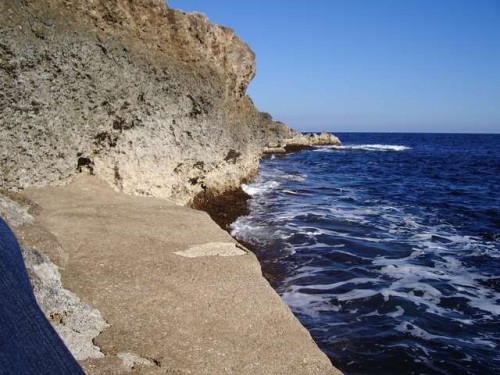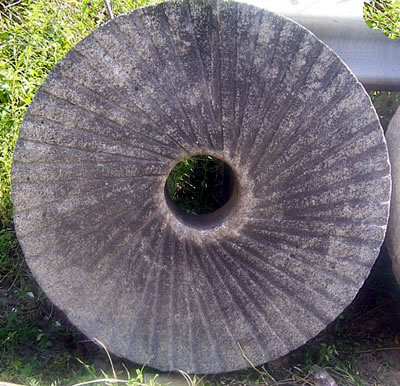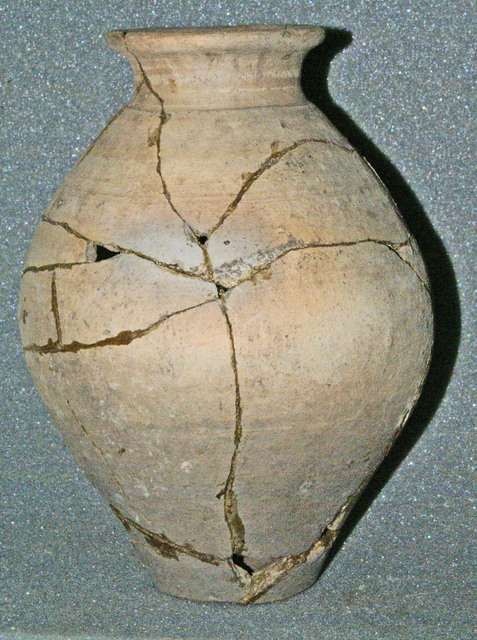|
ROCKS OF THE BIBLE
 The rocks have many points of resemblance to water; so many that water is ranked among them as a mineral. They agree in their differences from sensitive animals and growing plants. But rocks are utterly unlike water in their hardness, inflexibility, and solidity. The rocks have many points of resemblance to water; so many that water is ranked among them as a mineral. They agree in their differences from sensitive animals and growing plants. But rocks are utterly unlike water in their hardness, inflexibility, and solidity.
We found the spiritual correlative of water in the general truth which shows what is good and practicable in any given case—truth which is universal, applicable to all circumstances, and taking its quality in great degree from circumstances. The rocks of the mind must be principles that are fixed, unyielding, and nearly unchangeable.
Such principles there are of many kinds. There is an immense quantity of truth concerning things that have been done; which truth is now fixed, and not subject to change. This may be called historical truth. When it is really fixed, it is solid, inflexible, and to be depended upon, like the stones. Another kind of truth, still more extensive than that of history, is the fixed truth of natural history. It is such truth as that the sun gives heat; that grains and fruits are nutritious; that lambs are innocent; that birds have nests; that the morning always follows the night, and summer the winter. There is an immense variety of truth like this that is in the very nature of things, and it is the foundation of all theories, plans, and works. All this fixed truth of natural history and of history has the general characteristics of rock. It is hard, solid, and unyielding; we trust to it, and build upon it and with it, in a manner exactly corresponding to our use of stones.
Stones are inflexible, but they can be broken or cut so that larger or smaller fragments may be taken for use. The facts of history, likewise, are not easily bent out of their natural forms, but they may readily be subdivided, and such portions of them taken as are wanted. The fixed truths of nature also are inflexible, but may be opened by well-directed effort, and examined in their details. It is a comprehensive truth of this kind that the earth attracts towards itself all material bodies. We readily separate from this general truth the particulars that the earth attracts this falling stone or these fluttering leaves; for this mental stone has been so long exposed to the wear of human thought that its surface is easily pulverized. It is more difficult to see that the earth extends her attractive power to the sun, the planets, and the stars.
Another nobler rock is the truth that the Lord’s Providence is over all the events of life. This rock lies deep, but not too deep for the knowledge of those whose lives are deeply founded; yet even they separate from the rock the particulars, and see that the Divine Providence is in this or that event, only by considerable effort.
ROADS
Of broken stones we make our roads, which by use become smooth and hard, suited for walking, riding, or the transportation of heavy loads. Spiritual distance is difference of state. And spiritual roads are the ways by which we pass from our own familiar states of thought and feeling to the states of others like or unlike our own. If there be an abundance of fact, or of certain truth, more or less common, which reaches our neighbor’s state as well as our own, and which we both are familiar with, or take for granted because of its general use, it is easy to pass from one state to the other, and to interchange the good things of both. If the truths we depend upon are new to us, and it is necessary to observe and recognize them separately, the way is tedious, and progress in coming together is slow, as by a freshly dressed road. Or if there be individual truths that we have to stop to explain away, and especially if they arrest the whole attention and refuse to be explained away, our road is obstructed, perhaps altogether closed, by misplaced stones.
SOIL
The rocks, finely pulverized, make the greater part of the soil, and in this condition they give support to plants and trees. The particles of the soil correspond to the little particulars of natural truth which we are obliged to depend upon and to use in the plans for work and for pleasure of every day’s life. No plan can be formed without building into itself some particulars of truth of nature, which, when the present need has passed, may serve for others; as there is no plant but has its mineral ash which, when the plant decays, is food for other plants.
MILLSTONES
 Of the rocks we make millstones, by which the grains are broken and ground into flour for bread. In this work millstones perform a similar use to that of the teeth, which are little millstones for laying open the interior parts of food. Upon the lower millstone the grain rests as it passes from the hopper, and the upper stone revolving lays open and separates all its particles. Grains are the works of everyday duty, more or less noble according to the principles of life of those who do them, and more or less filled with Of the rocks we make millstones, by which the grains are broken and ground into flour for bread. In this work millstones perform a similar use to that of the teeth, which are little millstones for laying open the interior parts of food. Upon the lower millstone the grain rests as it passes from the hopper, and the upper stone revolving lays open and separates all its particles. Grains are the works of everyday duty, more or less noble according to the principles of life of those who do them, and more or less filled with
thought and affection for the neighbor. The works not understood do not nourish the souls of men; but examined and known as to the affection and thought within them, they do give comfort and strength to human hearts. To examine them thoroughly, we need a lower millstone of general truth about the states and circumstances under which the works were done; and an upper, movable
millstone about what it would be natural for us to do under such conditions. And this we need to apply to the works under consideration, bringing out the thought and feeling that entered into them.
Millers know that after long use their millstones become smooth and blunted, so that the grain passes through them imperfectly ground. And so by friction in the world, our fundamental principles of human nature and human life become worn and glossed over, so that we pass many things in a conventional way, without examining them sufficiently to get hold of their true quality. And then we need to attend to our principles, to break up their worldly easiness, and to bring out their crystalline surfaces of genuine truth, which will examine thoroughly and judge rightly.
POTTERY
 Of stone were formerly made jugs and pitchers for water; and nowadays these, and a thousand other vessels for containing food and drink, are made of clay hardened to stone by fire. These vessels are the facts of our daily wants, which formerly were few and simple, and fashioned from the truth of nature; but now are many and artificial formed from the truth of usage and fashion merely, hardened by our love for it into fixed customs. These, however, are easily broken when genuine truth of nature is applied to them; but even then, their fragments are almost indestructible—facts of what life has been. Of stone were formerly made jugs and pitchers for water; and nowadays these, and a thousand other vessels for containing food and drink, are made of clay hardened to stone by fire. These vessels are the facts of our daily wants, which formerly were few and simple, and fashioned from the truth of nature; but now are many and artificial formed from the truth of usage and fashion merely, hardened by our love for it into fixed customs. These, however, are easily broken when genuine truth of nature is applied to them; but even then, their fragments are almost indestructible—facts of what life has been.
DEPOSITED AND CRYSTALLINE ROCKS
The clay of which pottery is made is itself originally derived from the primitive rocks. By the action of ice and water, particles and larger fragments are continually separated from the rocks, and by their own friction they disengage other fragments. These, borne by the running water into seas or inland lakes, are deposited, the larger bits early in beds of gravel or sand, the smaller, because they unite more intimately with the water, more remotely in beds of clay; and these beds, if undisturbed, are hardened by Nature’s slow, gigantic kiln—the sand into sandstone, the clay into slate.
In the domain of mind we trace the corresponding process. The primitive rocks are the fixed truths of nature; running water is the truth which shows what is good, right, and useful, under any given circumstances. This truth, as men receive it, is directed and guided by the fixed truth of nature—as, for example, that it is not practicable to use stones for bread, or fruits for building; and it is continually incorporating with itself such bits as show what is possible or impossible—as that when we are hungry we must eat what is soft and nutritious; and by the comparison of these again with the original mass of truth, it detaches more particulars—as that grains are edible, and are made more so by cooking; fruits, also, in various degrees. The great streams which bear onward these bits of natural truth are the thoughts and lives of communities; the lakes and seas to which they are borne, are the various forms of memory and history; the water of the seas is the truth which men have lived; and the deposited beds of stone are the portions of fundamental truth which they have received and worked into their lives, and which now constitute the facts of their lives.
In such deposited rock are imbedded in great numbers the remains of plants and animals, both those that have been washed down from the land, and those that lived in the water; and so history preserves to us the biographies of individual men, imbedded like fossils in the mass of general knowledge of what was done and thought in their time. Especially do we have preserved mementos of the historians and the accumulators of knowledge; for these are like inhabitants of the sea, delighting in the knowedge to which the sea corresponds, and identifying themselves with it.
There are some beds of rock, as various kinds of limestone, which are made altogether of the remains of animals; the beds of coal, on the other hand, are composed of vegetable remains. To study them all would be to explore the whole spiritual history of mankind—a delightful subject, indeed, to pursue, and one that will yield precious returns of spiritual knowledge to future students of correspondences.
From what has already been said, however, we are prepared to interpret the distinction between the stratified rocks, which were deposited underwater, and which cover nearly the whole of the rock surface of the earth, and the underlying rocks, mostly crystalline, and bearing the marks of intense heat, which usually appear upon the surface only among high hills and mountains. The latter are the truths of nature and of human nature, as God made them and as they really are. The former are these truths as men have understood them and lived them. These two kinds of rock, where they come in contact, cannot readily be distinguished from each other, many crystalline rocks having been originally deposited, and then modified by heat or by hot water. The correlative truth is that even the truths of nature took form by degrees, as nature itself came into form, and the order of its operations became established. For instance, the truth that birds produce their young from eggs did not always exist; for birds did not always exist. But when birds were created they began to lay eggs, and from the little isolated facts of one and another having laid eggs, soon grew up the crystalline truth that they always produce their young from eggs.
In mountains the fundamental rocks rise far above the common level, sometimes bearing upon their slopes the stratified rocks, and sometimes rising above them. They lift their heads even among the clouds, which cling about them with special fondness, continually watering them with pure rain and snow from heaven, and sending down their rocky sides life and power and fruitfulness to the country all around.
Upon such fundamental spiritual rocks as that the world, created by God, is from humanity and for humanity; that the existence of the world is its continual creation, and that the Lord’s Providence rules every particle in it; upon such rocks as these we rise, often with many less perfect traditional ideas, far above the ordinary level of life, to a height where the spiritual atmosphere is clear and pure, where we think and see truly, and where we drink of the water of life directly from the Lord through the clouds of His Word. It is well for the spiritual and moral welfare of all, that such truths as these are acknowledged by some.
PRECIOUS STONES
The facts which we have been considering about the rocks are distinct clearly defined truths about the very nature of the things. They are crystals, most of them opaque, yet reflecting obscurely the light of spiritual truth. But there are also precious stones which are distinguished from common stones by their hardness and by their beautiful colors, or the brilliancy of the light which they transmit. They are truths in natural forms, from which or through which the light of spiritual wisdom shines clearly.
When Peter confessed to the Lord, “Thou art the Christ, the Son of the Living God,” the Lord replied, “Upon this rock I will build my
Church.” This confession is, indeed, the foundation of the Christian Church; but it is no dull, opaque rock. It is open to the light of the Sun of heaven, and to those who love that light it is full of heavenly beauty. We need not wonder that the broad foundation of the Church is a precious stone. All the foundations of the Holy City are precious stones; her streets are pure gold, and her gates are pearls.
The Lord’s Word is full of jewels, finer, purer, more enduring, more full of light, than any other stones. All our spiritual life rests upon such certain truths as these:
I and my Father are One. (John 10:30) He whom God hath sent speaketh the words of God. (John 3:34)
I am the Living Bread that came down from heaven. (John 6:51)
That which is born of the flesh is flesh, and that which is born of the spirit is spirit. (John 3:6)
Whosoever shall do the will of God, the same is my brother and sister and mother. (Mark 3:35)
God so loved the world that He gave His only begotten Son, that whosoever believeth in Him should not perish, but have everlasting life. (John 3:16)
Every good tree bringeth forth good fruit; but a corrupt tree bringeth forth evil fruit. (Matthew 7:17)
Among such jewels, those that reveal the love of the Lord for man, and the reciprocal love of men for the Lord, if presented to our spiritual sight as gems, would shine with warm light as the ruby, the carbuncle, and the sardius. Those that show the clear light of the Divine Wisdom would shine like clear crystal, or like the diamond. Those that treat of the love of wisdom in angels and men, according to the quality and the purpose of the wisdom loved, might appear in a variety of colors, like those of the sapphire, the sardonyx, the beryl, or the jacinth; for these colors represent such heavenly affections.
Author: JOHN WORCESTER 1875
|
|